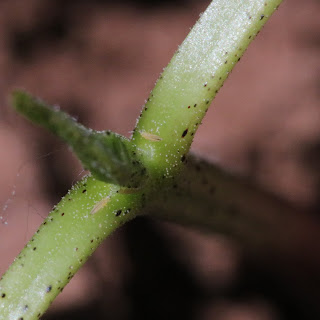This does not appear to be a phenomenon confined to the Lubbock Research Center, as Katelyn Kesheimer, EA-IPM in Lubbock and Crosby counties, reported several hundred moths in the Crosby County traps she operates. (Rain filled the traps so it was not possible to count all the moths, but there were hundreds.) Additionally, Blayne Reed, EA-IPM in Hale, Swisher and Floyd counties, drove to Plainview from College Station late last week and reported that fall armyworm moths were very abundant at rest stops along the way.
A prior post from April of this year discussed some genetic work being done by Ashley Tessnow, a graduate student in the Dept. of Entomology at College Station. She determined that the Lubbock area fall armyworm moths we sent her last year were 30% rice strain and 70% corn strain as a season average. She also noted that the relatively big flight toward the end of June last year had 93% corn strain.
We don't know where these moths are coming from. Some are doubtless progeny of the moths that arrived here earlier in the season, but it is likely a majority of the moths caught this week have come up from south Texas. Ashley's work will ultimately help us to know the geographic origins of our moths.
Most Bt corn will not get appreciable damage, but non-Bt corn should be scouted. Yesterday I noted that there were a lot of newly hatched larvae in my non-Bt corn at the Experiment Station just as the oldest larvae were cycling out. Actually there were a lot of plants infested by larvae from egg masses that had hatched in the last 24 - 48 hours. Some of these newly infested plants had four or more larvae per whorl and may get "dead heart" due to the very high numbers of caterpillars feeding on the youngest leaves in the whorls. Sorghum should be scouted as well.
Information on scouting and thresholds can be found for corn here and sorghum here. Essentially, both of these crops can withstand 30% whorl damage before an insecticide is justified. This does not, however, apply when deadheart is likely to happen. There are a few fields of corn in the area that are silking now, and these should be scouted regardless of whether they are Bt or non-Bt.
While scouting it would be a good idea to look for corn earworm eggs and larvae; the moths are very abundant in my whorl stage corn although I do not have any pheromone trap data to report.





